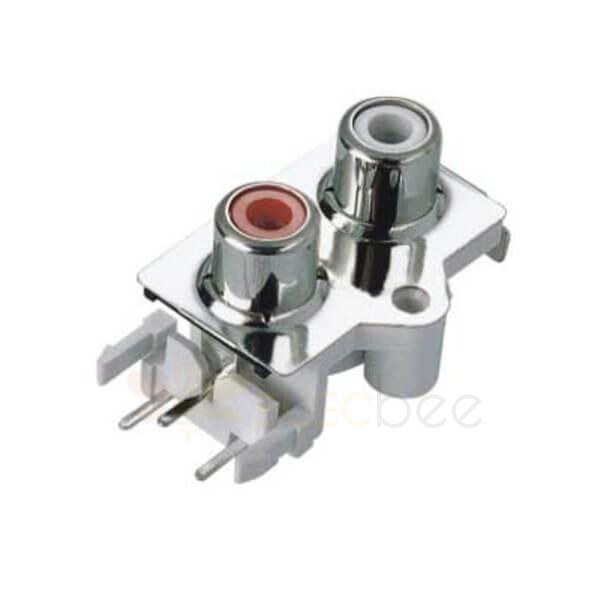Audio and video connectors come in a variety of options, but two of the most commonly used connectors are BNC and RCA. Although both connectors transmit audiovisual signals, they differ significantly in their design, capabilities, and applications. In this article, we will explore the key differences between BNC and RCA connectors to help you determine which connector is most suitable for your needs.
BNC Connectors
BNC (Bayonet Neill-Concelman) connectors are coaxial connectors that were developed in the late 1940s by Paul Neill and Carl Concelman. BNC connectors are commonly used in professional video applications, such as broadcast television, CCTV, and military equipment, as well as radio frequency (RF) applications.
BNC connectors have a bayonet-style locking mechanism that makes them very secure and reliable. The connector has a cylindrical shape with a small protruding pin in the center, which is surrounded by a metal sheath. The center pin and the metal sheath are separated by an insulating material, which helps to prevent signal interference.
BNC connectors are available in both 50-ohm and 75-ohm versions. The 50-ohm version is typically used in RF applications, while the 75-ohm version is used for video applications. The unique design of BNC connectors helps prevent signal leakage and ensures minimal loss of power or degradation over long transmission paths. Their shielded and snug-fitting interface is essential for high-gain or high-power applications that require an amplified, undistorted signal.
RCA Connectors
RCA (Radio Corporation of America) connectors are another type of coaxial connector that are commonly used in audio and video applications. RCA connectors were introduced by RCA in the 1940s and were originally used for connecting phonographs to amplifiers.
RCA connectors, also known as phono connectors, have a cylindrical shape with an external thread. They have a more limited bandwidth of around 1 GHz but are more compact, affordable, and easier to interconnect cables. RCA connectors are typically used for analog audio and video signals, and they have a circular shape with a small pin in the center that carries the signal, while the metal ring acts as the ground.
RCA connectors are available in both male and female versions. The male version has a pin that protrudes from the center, while the female version has a hole that the pin fits into. However, RCA connectors do not have a locking mechanism and rely on friction to keep the connector in place, which can make them less secure than BNC connectors. The exposed contacting surfaces are also more prone to corrosion, interference, and eventually a compromised electrical connection over time with frequent use.

Differences between BNC and RCA Connectors
Secure and Durable Connection
BNC connectors have a bayonet-style locking mechanism that makes them very secure and reliable. The locking mechanism ensures that the connector remains firmly in place, even if it is subjected to vibrations or other forces. They can withstand repeated connections and disconnections without damage.
In contrast, RCA connectors do not have a locking mechanism and rely on friction to keep the connector in place, which can make them less secure than BNC connectors. The exposed contacting surfaces are also more prone to corrosion, interference, and eventual compromised electrical connection over time with frequent use.
Amplified Signal Integrity
The superior shielding and secure fitting of BNC connectors allow them to properly support a wider range of frequencies with minimal signal loss. They can carry high-frequency signals up to 4 GHz, enabling various wireless communication systems.
RCA connectors lack this shielded interface and secured fitting, so signal integrity depends more on the quality and length of the interconnecting cable.
Higher Frequency Support
The secure and snug-fitting interface of BNC connectors enables them to properly support a wider range of frequencies with minimal signal loss. They can carry high-frequency signals up to 4 GHz, enabling various wireless communication systems.
Comparatively, the loose fit and exposed design of RCA connectors restrict their usable frequency range to around 1 GHz.
Signal Quality
BNC connectors are designed to transmit high-frequency signals with minimal loss. They are commonly used in professional video applications, where signal quality is of utmost importance.
RCA connectors, on the other hand, are typically used for analog audio and video signals. They are not designed to transmit high-frequency signals and may result in signal degradation if used for high-frequency applications.
Impedance
BNC connectors are available in both 50-ohm and 75-ohm versions. The 50-ohm version is typically used in RF applications, while the 75-ohm version is used for video applications.
RCA connectors have a characteristic impedance of 75 ohms. They are designed to match the impedance of coaxial cables, which helps to minimize signal loss.
Applications
BNC connectors are commonly used in professional video applications, such as broadcast television, CCTV, and military equipment, as well as radio frequency (RF) applications.RCA connectors, on the other hand, are commonly used in home theater systems, DVD players, and other consumer electronics for analog audio and video signals.
Conclusion
In conclusion, BNC and RCA connectors are both coaxial connectors commonly used in audio and video applications. BNC connectors are designed for professional video applications, where signal quality and reliability are of utmost importance. They have a bayonet-style locking mechanism and are available in both 50-ohm and 75-ohm versions.
RCA connectors, on the other hand, are typically used for analog audio and video signals. They do not have a locking mechanism and rely on friction to keep the connector in place. They have a characteristic impedance of 75 ohms and are commonly used in home theater systems, DVD players, and other consumer electronics.
When choosing between BNC and RCA connectors, it is important to consider the specific application and the requirements of the system. BNC and RCA connectors differ significantly in their performance, features, and applications. BNC connectors provide a shielded, secure and durable connection with high bandwidth and signal integrity suitable for mission-critical systems. RCA connectors are more basic, affordable, and limited in bandwidth, better suited for simple audiovisual connections over short distances. Understanding these key differences will help you choose the right connector for your specific needs, ensuring that your audio and video signals are transmitted with the highest quality and reliability possible.

